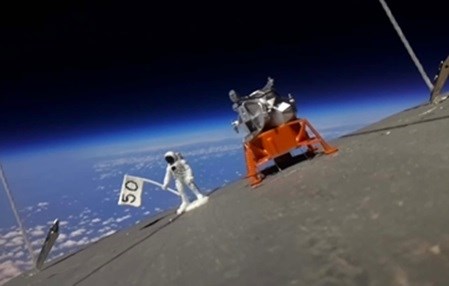West Ferris Intermediate Secondary School, physics teacher Kelly Shulman will be travelling to NASA’s Goddard Space Flight Center in Greenbelt, Maryland to speak about the West Ferris Near Space Program at the International "Observe the Moon" event.
The Goddard Center is home to America's largest organization of scientists, engineers, and technologists who build spacecraft, instruments and new technology to study Earth, the sun, the solar system, and the universe.
The event takes place Saturday, October 5.
International Observe the Moon Night is a worldwide celebration of lunar science and exploration. Shulman has been invited to speak at the event about her personal connection to lunar exploration and the elevation of education through stratospheric balloon launches. The West Ferris Near Space Program gained NASA’s attention as a result of the Moonshot Mission, dubbed Apollo ’19, that was launched in May from the school’s football field.
See: Up, up and away! Weather balloon launch planned
"We sent up a little lunar lander and an astronaut, toys, and we had cameras on that so they were filmed all the way up," she old CKAT News. "So we had a picture of that from about 33 kilometres in altitude. Then what happens is the balloon explodes and our payload of sensors and computer and cameras come plummeting down back to earth under a parachute."
The last launch the payload was retrieved in Powassan.
NASA included a story and images from the West Ferris mission as part of their anniversary celebrations this July.
See the story and images here (fourth story down).
The Near Space Program is a co-curricular effort by physics and computer science students at West Ferris school. Students in Shulman’s physics course set mission goals and construct the payload and flight train, while computer science students provide the programming to transmit tracking information, operate cameras and record sensor data.
Planning for this year’s mission is just getting underway with a launch planned for some time in the spring of 2020.
See the video of the launch below.



